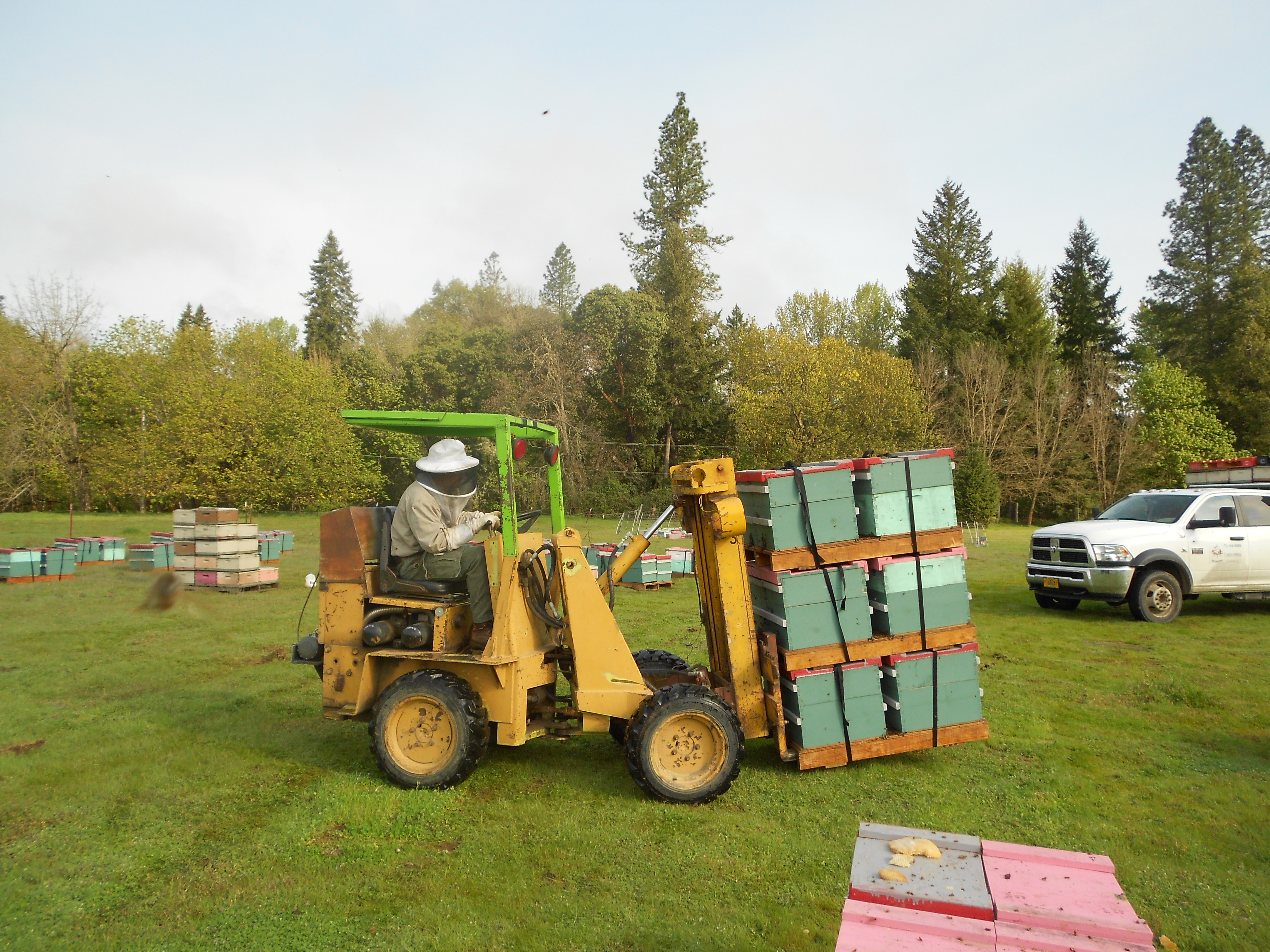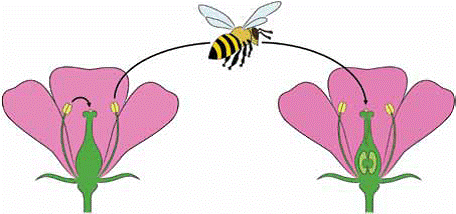contributed by Dr. Dewey M. Caron
The middle week of June is our set aside for special recognition of pollinators. Governor Kitzhaber has proclaimed the middle week of June 16th to 21st as Oregon Pollinator Week. Several events are planned to recognize honey bees including a queen rearing course in Canby I am offering. Check out www.Pollinator.org for other events during pollinator week.
Beekeepers know honey bees as our greatest insect ally. Most of us keep bees for honey and hive products such as beeswax, propolis and pollen, all distinctive and unique. Probably the most critical biological role of honey bees however is their pollination of plants. Planned pollination, usually with honey bee colonies, and natural pollination, from honey bees and native pollinators, has an estimated contribution of $20 to over $40 billion annually to US Agriculture.
There are about 250,000 species of flowering plants on earth. For each, sexual reproduction requires that compatible pollen move from the flower anther to a receptive stigma. This process is pollination, a keystone biological process. Pollination is the necessary first step in the process of plant reproduction.
When compatible pollen adheres to a receptive stigma in the same plant species, it may germinate and produce a pollen tube that grows through the centrally located style to the ovary of the flower. Each pollen grain is a male plant, with one-half the genes, a haploid gametophyte (reproductive plant). If conditions are optimal, the nucleus of the pollen grain when it reaches the ovule (plant egg), unites with the ovule, the female gametophyte, thus achieving fertilization.
Some flowers can be self-pollinated. This occurs when the pollen grain of the flower pollinates the same flower or other flowers of the same individual, i.e. plants of essentially identical genetic material.
Cross-pollinated flowers (out-crossing), occurs when pollen is transferred from one flower to another. Cross-pollination is associated with plant vigor and survival of the species as it results in a potentially greater mixing of genetic material. Diversity in genetic material enables plants (and bees too) to survive changing environmental conditions, such as we are experiencing now with climate change.
Many flowering plants have evolved various means to promote cross-pollination – this is where our bees come in. The figure illustrates self-pollination (left flower) and cross-pollination, with a bee moving the pollen grain from one flower where it can be accidently deposited on the flower stigma of a compatible flower as she forages for floral resources.
Cross-pollinated plants rely on an animal pollinator, i.e. biotic pollination, or on physical forces, such as wind or water (i.e. abiotic pollination), to move the pollen from one flower to another. The terms “pollinator” and “pollinizer” are often confused: a pollinator (or pollen vector) is the organism that moves the pollen, whether it be bees, flies, bats, moths, or birds; most pollinators (although not all) are animals that can fly. A pollinizer on the other hand is the plant that serves as the pollen source for other plants.
Some plants have developed elaborate flower modifications to prevent self-pollination i.e. not allow pollen from the anther to reach the stigma in the same flower. Flowers may have their pollen mature before the flower stigma in the same flower becomes receptive; others display self-incompatibility of pollen within a flower.
Another common means of facilitating cross pollination are plants in which the male pollen-producing anthers are absent but female parts function normally. We term the flower with ovary but no pollen as female orpistillate flowers. Other plants have the opposite condition, the female portion (the pistil) is absent, altered, or nonfunctional but anthers still produce pollen. This is termed a male or staminate flower. Cucumber and squash, and wind pollinated corn, are good examples of plants with staminate and pistillate flowers.
More than 100 years ago, it was recognized that growers planting large areas to a single plant crop, such as commercial fruit orchardists, needed to consider pollinators in their plant culture. Today pollination management seeks to develop alternative pollinators, crop and pollinator management schemes, as well as means to protect and enhance pollinators. The honey bee is the most versatile pollinator in crop pollination management. It is thus fitting that we pause during this mid-June week to thank our insect ally.
Dr. Caron taught at the University of Delaware for 40+ years with teaching, extension and research with honey bees (and entomology and wildlife conservation) and now holds an Affiliate position (volunteer) with Horticulture Dept (the bee unit specifically) at Oregon State University. He is active in Eastern and Western Apiculture societies and national bee groups. He is the Vice President of the Oregon State Beekeepers’ Association and served as President in 2010. He serves on the board of the Western Apiculture Society. He is an honored speaker at SOBA programs whenever he is available.
Dr. Caron’s book HONEYBEE BIOLOGY AND BEEKEEPING is available on Amazon.


